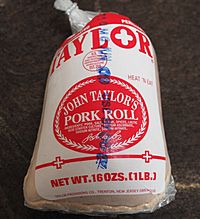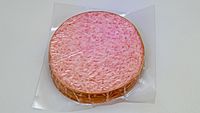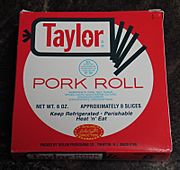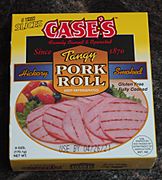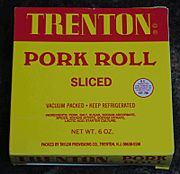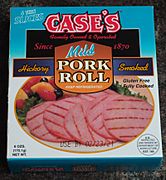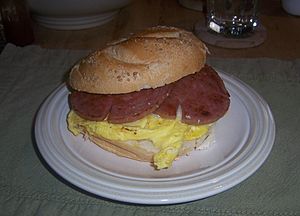Pork roll facts for kids
Pork roll is a special type of processed meat that is very popular in New Jersey and nearby states. It was first made in 1856 by John Taylor in Trenton. He originally sold it as "Taylor's Prepared Ham." However, rules about food names changed in 1906. This meant Taylor had to call his product "pork roll," just like other companies making similar items. In some parts of North and Central Jersey, people still call all brands of pork roll "Taylor Ham."
Contents
How Pork Roll Started
While similar meats might have existed before, John Taylor is known for creating his unique pork roll recipe in 1856. Later, in 1870, a farmer and butcher named George Washington Case from Belle Mead also created his own pork roll recipe. His version was said to be wrapped in corn husks.
Taylor first named his product "Taylor's Prepared Ham." But in 1906, new food laws were passed, like the Pure Food and Drug Act. These laws set clear definitions for foods like "ham." Taylor's product did not fit the new definition of ham. So, he had to change the name to "Taylor's Pork Roll." Other companies also made similar products, like "Rolled Pork." In 1910, a court decided that the names "Pork Roll" and "Roll of Pork" could not be protected by a trademark. This meant anyone could use these names.
Even a hundred years later, many people in North Jersey and parts of Central Jersey still use the old name, "Taylor ham."
What is Pork Roll Like?
Pork roll is a unique food from a specific area. It's a processed meat with a special taste. Because it's so unique, some people jokingly call it a "mystery meat."
In 1910, a judge described pork roll in a legal case. He said it was:
a food made of pork, packed in a round cotton bag. This shape allowed it to be easily sliced and cooked without taking it out of the bag.
Today, you can find pork roll in these round bags or already sliced and sealed in packages. You might also see "pork roll links," which are shaped like hot dogs. For a while, Taylor also made "Taystrips." These were the same meat but shaped into flat, rectangular strips, similar to bacon.
Larry Olmsted, a writer for USA Today, described the taste. He said it's "a mix between Canadian bacon and bacon." He noted it's "less hammy and smoky than Canadian, fattier and saltier than bacon." He also mentioned its "unique texture, both crispy and slightly mushy."
Each company that makes pork roll has its own secret recipe. However, there are generally two main flavors: Tangy and Mild. The Tangy flavor has a taste similar to salami, with a bit more lactic acid flavor.
Who Makes Pork Roll?
Many companies make pork roll. Some well-known producers include Taylor Provisions, which makes Taylor and Trenton brands. Case Pork Roll makes Case's brand. Other companies include Spolem Provisions, Clemens Food Group (which makes Hatfield), Leidys, and Rob-Dave Distributors.
- Boxes of sliced pork roll
How to Cook Pork Roll
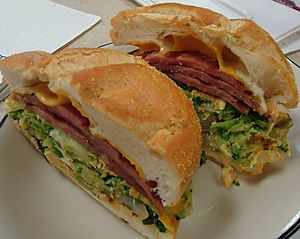
Even though packages might suggest grilling, pork roll is usually fried. People typically cook slices in a pan or on a griddle. You don't need to add oil or butter. When heated, slices of pork roll naturally curl up like a cup. To make them lie flat, people often make up to four small cuts from the edge towards the center. This gives the cooked slices a unique shape. Pork roll is ready when it's hot and a little crispy.
Pork roll is often eaten in a sandwich. It's commonly paired with egg and/or cheese. A very popular breakfast sandwich in the area is the "Taylor ham, egg and cheese" or "pork roll, egg and cheese." This sandwich has fried pork roll, a fried or scrambled egg, and American cheese. It's usually served on a hard roll, bagel, or English muffin. Popular toppings include black pepper, ketchup, mustard, hot sauce, lettuce, and tomato.
Pork roll is also used in other recipes. You might find it in a "Jersey Burger" or a pork roll Monte Cristo. It can even be used in a twist on deviled eggs.
Images for kids
See also
 In Spanish: Pork roll para niños
In Spanish: Pork roll para niños



